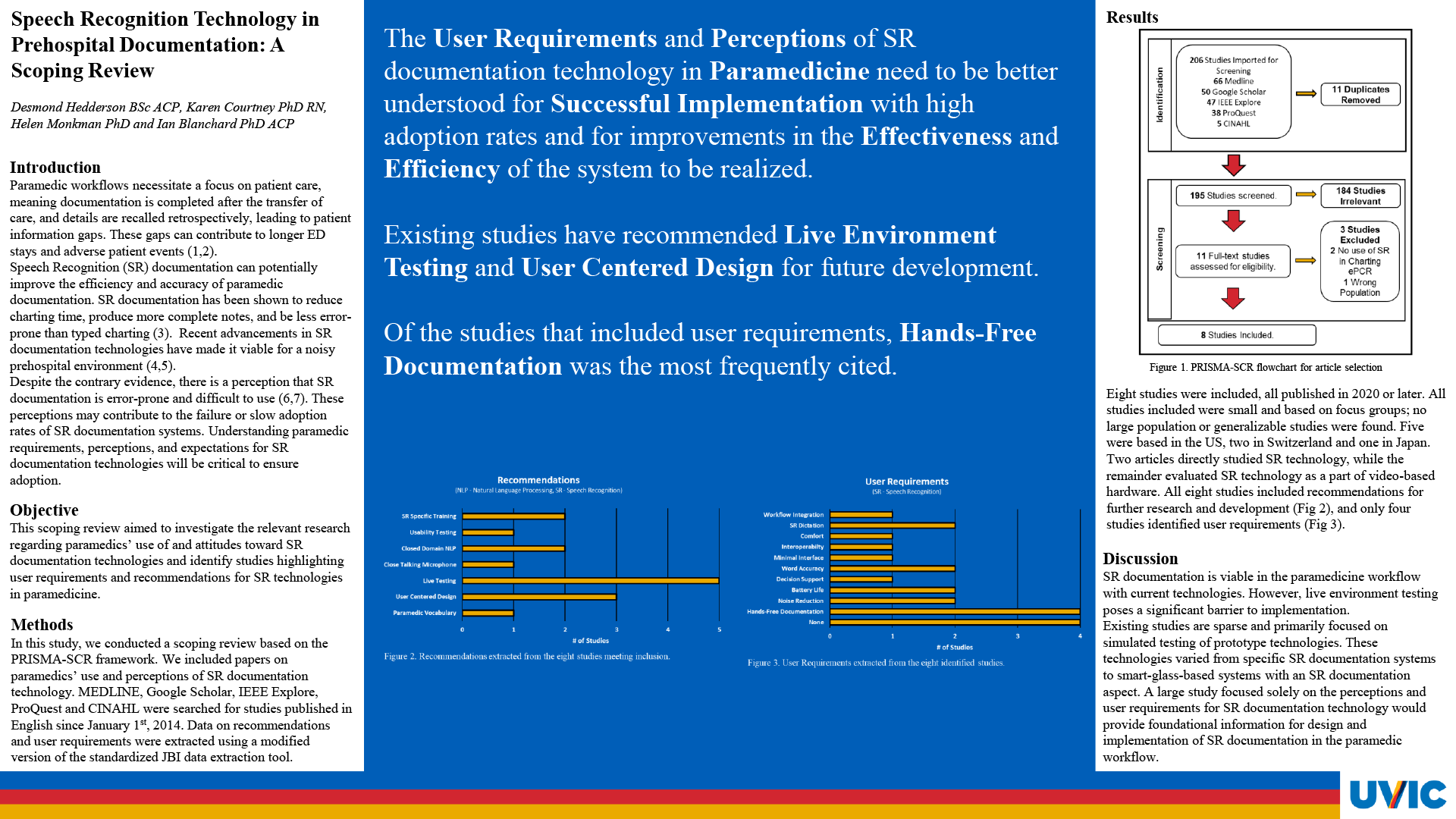 |
|
Speech Recognition Technology in Prehospital Documentation: A Scoping Review Methods MEDLINE, Google Scholar, IEEE Explore, ProQuest, and CINAHL were searched from 2014 to March 2024. Criteria included studies focused on paramedics' use or perceptions of speech recognition documentation technology. This review included studies conducted in the prehospital environment and adjacent agencies (i.e., ED, fire, police, military). Results The review identified eight articles that met inclusion criteria. All eight articles were small focus group-based studies in laboratory settings published on or after 2020. Five studies were conducted in the United States, two in Switzerland, and one in Japan. Of the eight studies, five recommended further live environment testing of the technology examined, and three underscored the importance of a user-centred design. The top user requirements for speech recognition adoption was hands-free use, noise reduction technology, battery life, and word accuracy. All eight studies recommended further research and development of speech recognition documentation technology in the prehospital workflow. Conclusion This scoping review has highlighted that while there is a growing interest in speech recognition documentation technology in the paramedicine workflow, more research is needed, especially with larger samples in a live environment. The user requirements and perceptions of speech recognition documentation technology in paramedicine must be better understood to design systems with high adoption rates. Poster References: 2. Eggins S, Slade D. Communication in clinical handover: improving the safety and quality of the patient experience. J Public Health Res [Internet]. 2015 [cited 2023 Jun 6];4(3). Available from: https://journals.sagepub.com/doi/epub/10.4081/jphr.2015.666 3. Blackley SV, Schubert VD, Goss FR, Al Assad W, Garabedian PM, Zhou L. Physician use of speech recognition versus typing in clinical documentation: A controlled observational study. Int J Med Inf. 2020 Sep;141:104178. 4. Shagoury J. Dr. “Multi-Task”: Using Speech to Build Up Electronic Medical Records While Caring for Patients. In: Neustein A, editor. Advances in Speech Recognition [Internet]. Boston, MA: Springer US; 2010 [cited 2023 Jun 6]. p. 247–73. Available from: http://link.springer.com/10.1007/978-1-4419-5951-5_11 5. Tanberk S, Dağlı V, Gürkan MK. Deep Learning for Videoconferencing: A Brief Examination of Speech to Text and Speech Synthesis. In: 2021 6th International Conference on Computer Science and Engineering (UBMK). 2021. p. 506–11. 6. Zuchowski M, Göller A. Speech recognition for medical documentation: an analysis of time, cost efficiency and acceptance in a clinical setting. Br J Healthc Manag. 2022 Jan 2;28(1):30–6. 7. Joseph J, Moore ZEH, Patton D, O’Connor T, Nugent LE. The impact of implementing speech recognition technology on the accuracy and efficiency (time to complete) clinical documentation by nurses: A systematic review. J Clin Nurs. 2020 Jul;29(13–14):2125–37. |
Desmond is an Advanced Care Paramedic and graduate of the BSc major in Paramedicine program from the University of PEI where he was the founding president of the UPEI Paramedicine Society. Currently completing his MSc in Health Informatics from the


